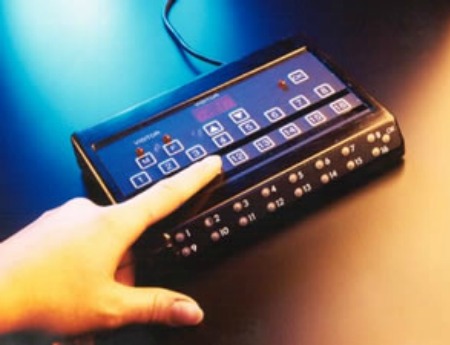Nielsen Says Bye-Bye Diaries, Hello PPM

Days after announcing it would retire its ancient, infamous paper diaries used to record individuals' television viewing, Nielsen said it will be using a more modern technology to enhance its local TV ratings.
Nielsen said it would start to use Personal People Meters to measure in-home and out-of-home viewing in 2017.
Personal People Meters were developed by Arbitron, a former Nielsen competitor. Nielsen has been using the meters, which viewers in the Nielsen sample carry around like a cell phone, to measure radio consumption.
Nielsen has been under pressure from the industry to upgrade its ratings service as more viewing moves to digital devices.
Although distracted somewhat by an accounting investigation, comScore has emerged as a potentially serious challenge to Nielsen’s ratings dominance, particularly in local markets after acquiring Rentrak in a deal that closed earlier this year.
According to comScore, it has 682 stations as clients, up 74% from 370 in November 2014. About 30% of comScore clients subscribe to comScore ratings exclusively, including stations owned by networks. Groups that have done deals with comScore include Nexstar, Raycom, Bonten and Lilly. comScore also has full group deals with ABC, CBS, Fox, Tribune, Sinclair and others.
On the national side, Viacom said it did more of its upfront deals using metrics based on comScore data. During Viacom’s earnings call in August, former CEO Philippe Dauman called the increasing reliance on comScore a "welcome change.”
Broadcasting & Cable Newsletter
The smarter way to stay on top of broadcasting and cable industry. Sign up below
But since last year, Nielsen has been making strides in it plans to include all viewing on all devices in its tabulations as it races against comScore, which is banking on set-top box data as the basis for its ratings.
Related: comScore Reveals Plans to Roll Out New Ratings
Last year it unveiled its Total Audience Measurement proposition and a big increase in the size of its sample. And more recently, it has moved its digital content ratings into syndication and announced a time table for phasing in total content ratings by March.
Related: 7 Things You Need to Know About Nielsen's New Tool
Some media buyers and network ad sales executives are talking about using Total Audience Measurement as a currency for next year’s upfront.
In local markets, Nielsen says it plans to include viewing from over 75,000 PPM panelists, effectively doubling the sample size across 44 Local TV markets.
Nielsen said it estimates that will result in a 40% decrease in zero cells—time and channels with no panelists viewing. It will mean local TV clients will have increased opportunities to monetize their in-home and out-of-home viewing audiences. The inclusion of PPM measurement into the Nielsen Local TV service will bring additional stability and depth to local TV ratings. The integration will advance Nielsen’s ability to provide clients more granular data while measuring consumers wherever they watch, the company said.
"As part of our overall local market enhancement measurement strategy, Nielsen is maximizing the strengths of various data sets, including PPM data and Return Path Data, to help our local clients understand their total audience by capturing all sources of viewing. Additionally, we are providing them with the tools needed to maximize their audience and grow their business," said Megan Clarken, president, Nielsen Product Leadership. "The media industry is in the midst of an important transition and people have endless options for viewing their favorite content. We are the only measurement provider that can directly measure the out-of-home television audience."
In the first quarter of 2017, Nielsen will release a stand-alone service that gives local clients in the 44 markets the ability to see the incremental audience out-of-home viewing provides. The portability of the technology will measure TV viewing in locations including bars, offices, hotel rooms, and other places outside of the home where TV is watched.
Jon has been business editor of Broadcasting+Cable since 2010. He focuses on revenue-generating activities, including advertising and distribution, as well as executive intrigue and merger and acquisition activity. Just about any story is fair game, if a dollar sign can make its way into the article. Before B+C, Jon covered the industry for TVWeek, Cable World, Electronic Media, Advertising Age and The New York Post. A native New Yorker, Jon is hiding in plain sight in the suburbs of Chicago.

